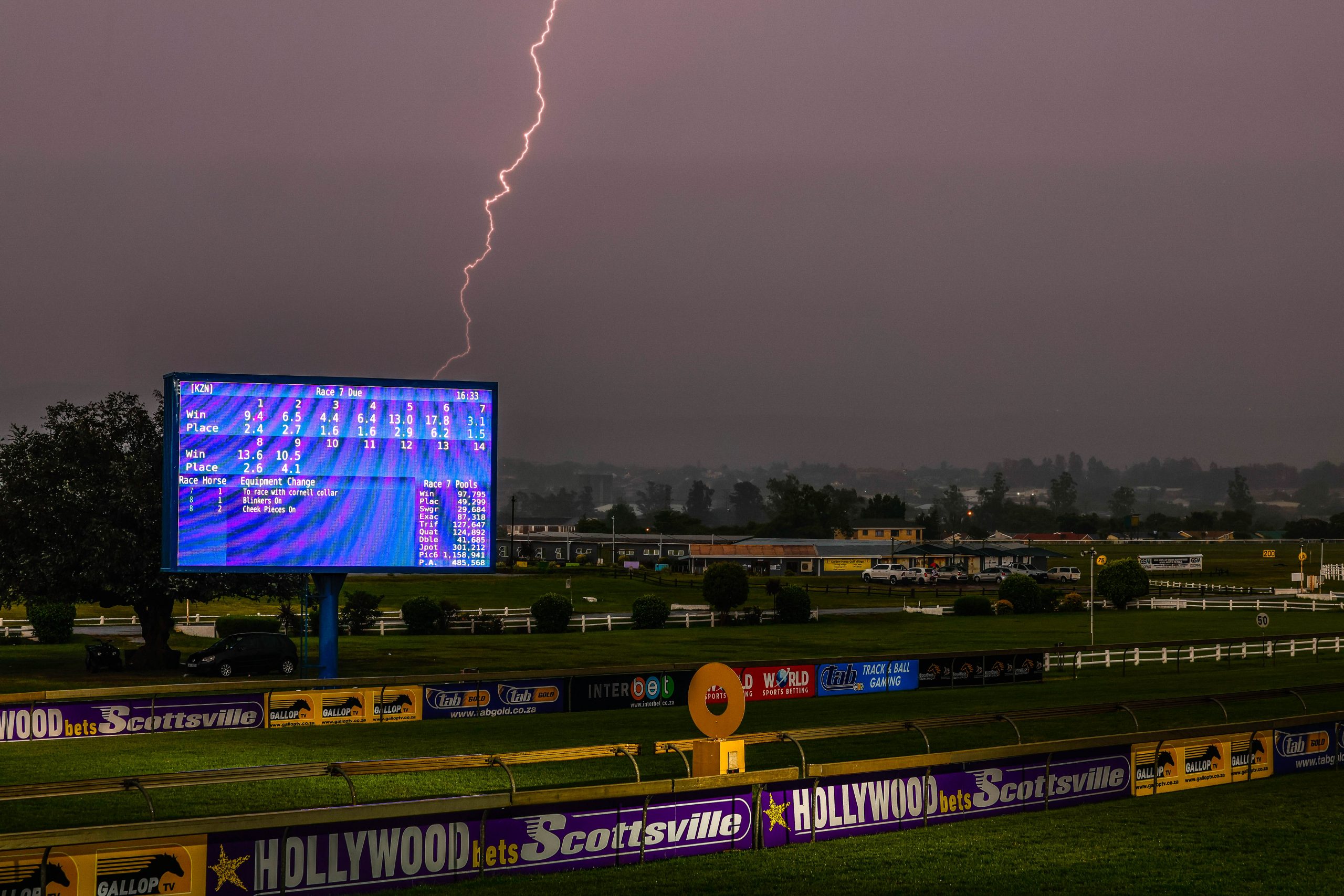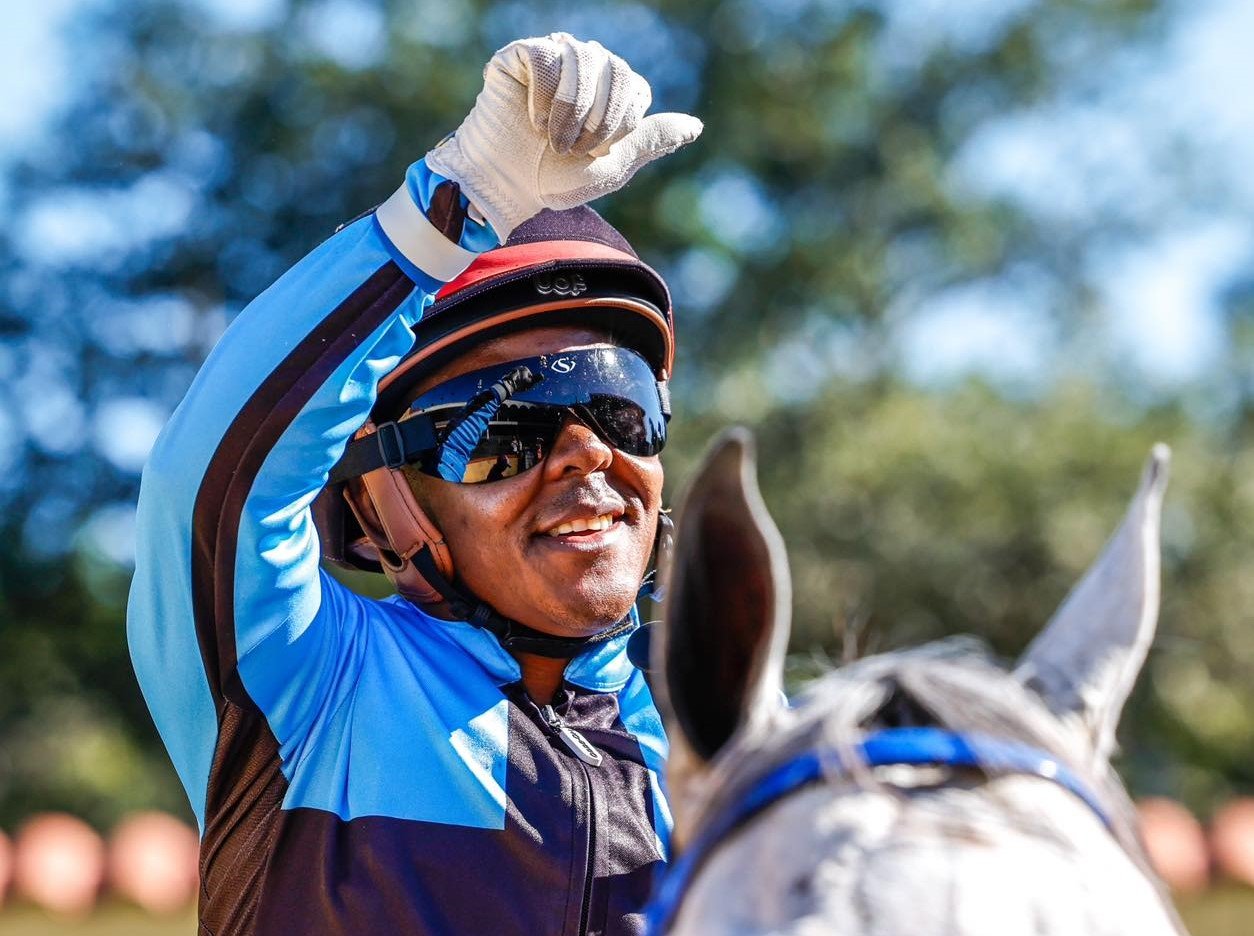South African Jockeys Academy (SAJA) Headmaster Graham Bailey has poured energy into his important role in the industry since starting in 2009 and has brought about many positive changes, but has often had to endure negative feedback based on false information. And the latest bout has been the mumblings about the perceived unfairness pertaining to apprentice Heavelon van der Hoven having to pay a large proportion of his CTS Million Dollar prize money back to the Academy.
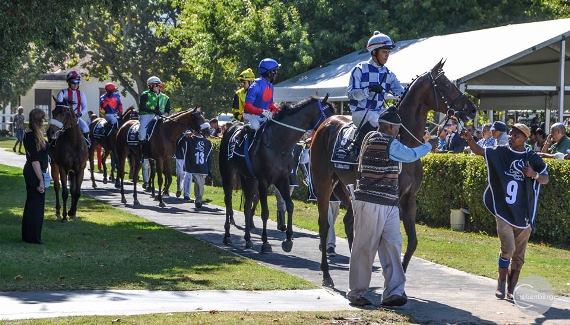
The Million Dollar build-up as Illuminator glances at the track en route to the start
Bailey puts his heart and soul into the job both for the good of the industry and for the lives of his pride and joy, the apprentices, and admitted to being thrilled by Van der Hoven’s Million Dollar win and the turnaround in fortunes it has brought to his career.
Read more about the Million Dollar Man
However, he explained, the Academy would not be viable as a learning institution were it not for its funding structure. The racing industry would instead have to revert to the old system of apprentices being indentured to trainers.
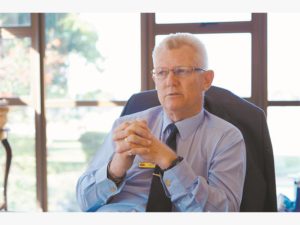
Headmaster Graham Bailey
The Academy budgets for expenditure per annum of R13,174,063 per year.
The breakdown of this amount is 51% on salaries, 6,4% on running costs of the Cape Town Academy, 4,8% on the Port Elizabeth Academy, 6,3% on the Stables and horses at the Academy, 5,7% to the kitchen, 4,7% on Property costs, 4,1% on electricity, 2,5% on vehicles and 14,5% on other costs such as transport to and from races etc.
The 51% for salaries might seem high, but it compares very favourably to other training institutions.
Bailey points out research would show schools and colleges spend probably between 65% to 68% on salaries and added the Academy runs on a tight ship and has a “very sleek” staff.
The Racing Operators (Gold Circle, Phumelela and Kenilworth Racing) subsidise the Academy to the tune of R6,7 million per year, which equates to about 50% of the required budget.
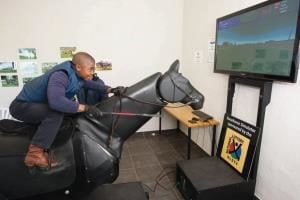 Therefore if the parents or guardians of the apprentices were required to make up the shortfall, they would need to contribute R6,5 million in total, and the current 37 apprentices countrywide would be charged training fees of R175,000 per annum.
Therefore if the parents or guardians of the apprentices were required to make up the shortfall, they would need to contribute R6,5 million in total, and the current 37 apprentices countrywide would be charged training fees of R175,000 per annum.
This would in most cases be impossible and some are unable to even afford the reduced fees charged. In fact the current training fees in total contribute only R530,000, or 4%, to the expenditure budget.
This means the Academy are left with a shortfall of close to R6 million, or 46% of the budget.
Therefore the riding fee and stakes money accumulated through the race riding of the apprentices is a vital contributor to the running of the institution.
The apprentices, upon signing their indentures, agree two-thirds (67%) of their income will be put towards the Academy’s expenditure budget and the other third (33%) goes into a personal savings account. Whilst a good University Student will graduate with zero money to take home, a good riding apprentice can expect to leave the Academy with over R200,000 in his back pocket.
However, even with this funding plan in place, the Academy have a problem because the apprentices’ riding income contributes only about R2,95 million per year, which covers only 22% of the total expenditure budget.

Dr Blade Nzimande and the class of 2012
The Academy were still left with about a R3 million shortfall (24% of the budget).
Bailey’s unremitting appeals for help to the Board of Higher Education eventually led to a visit by cabinet minister Blade Nzimande in 2012. The latter was so impressed with what he saw, including the seamless integration of the students, he immediately contacted CATHSSETA. Consequently the Academy have received a government grant ever since.
Bailey’s efforts also saw funding contributions being made by the gambling boards.
The 24% shortfall has thus been covered, while necessary upgrades to the facility have been possible and the Academy have also been able to come in line with global trends in professional sport by providing the apprentices with biokineticists, gymn facilities, a state of the art equisizer etc.
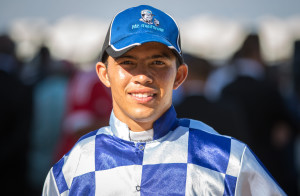
Heavelon van der Hoven (photo: hamishNIVENPhotography)
Bailey also pointed out an apprentice will on average take two years before earning any income, while it is only the cream who actually pay their way.
Ironically, Van der Hoven would have left the Academy with very little at the end of his five years, which were drawing to a close at the time of his miracle Million Dollar win.
However, his indentures have now been extended into a sixth year to allow him to reach 50 winners, because history has shown apprentices who have been granted their licences without losing their claim have never made it in this toughest of professions.
www.goldcircle.co.za






